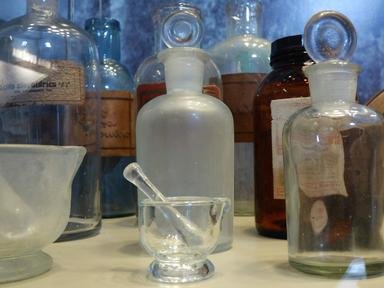Quiz Answer Key and Fun Facts
1. Which of the following elements provides extra protection for the Euro currency against being counterfeited?
2. The top of the Washington monument in D.C. is capped with which metal?
3. Which of the following elements has been a matter of contention for many years in India?
4. What element was instrumental in proving a theory about the dinosaurs' extinction?
5. Why are door knobs and handles often made of brass?
6. Yttrium is named after a town in:
7. What metal is so soft that it will melt in the palm of your hand?
8. Which of the following is NOT true of barium sulfate?
9. In what country did cadmium pollution cause a serious disease?
10. What is the effect of ingesting silver?
Source: Author
russalka
This quiz was reviewed by FunTrivia editor
WesleyCrusher before going online.
Any errors found in FunTrivia content are routinely corrected through our feedback system.

